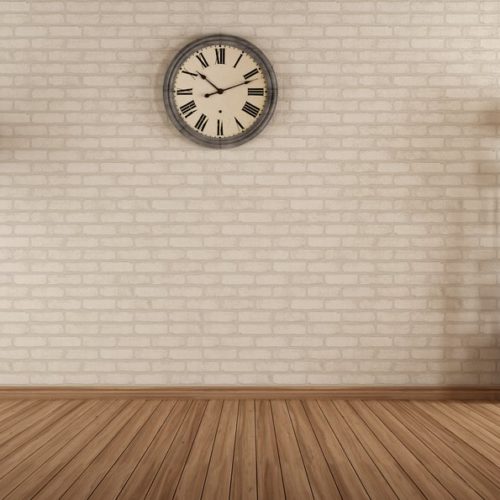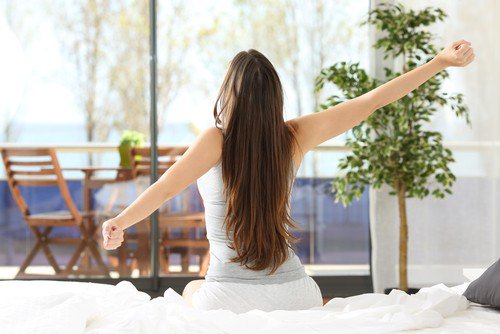“Accessibility – why do I care?!” is the reaction of many who come into contact with the topic for the first time. The opinion that barrier-free building and living only affects people with physical disabilities or the frail elderly is widespread. It is clear that certain life situations and physical limitations due to illness, age or disability make it difficult or even impossible to remain in one’s own home without adapting the structural structures. However, you also notice how important the issue of accessibility is when you yourself are temporarily struggling with mobility restrictions due to a broken leg, for example. In practice, it has also been shown that families with small children often have similar requirements for housing as older people: Young families with prams quickly learn to appreciate barrier-free access and sufficiently large movement areas within the home. Lower washbasins make it easier for both children and people in wheelchairs to do their daily morning toilet. Barrier-free living supports independence at any age and is therefore a question that sooner or later is important to all of us.
the essentials in brief
- The low-barrier design of one’s own living area supports an independent lifestyle at any age and in different life situations.
- Even when building or buying a house, future health needs and limitations should be taken into account and the appropriate precautions taken.
- Sufficient space for movement and a corresponding arrangement of the apartment furnishings are essential prerequisites for a barrier-free design.
The barrier-free terminology jungle
When talking about low-barrier building and living, it is worth first taking a closer look at the term “barriers”. the apartment equipment. In real estate jargon you will find different terms on the subject of accessibility with the endings -free, -poor, -fair, -friendly etc. But where exactly are the differences and which adjustments make sense? The most vague are the terms “age-appropriate” and “senior-friendly”, which are not clearly defined and are in many cases used purely for advertising purposes.
A “barrier-free” apartment is free of thresholds and in most cases has doors that are wide enough to allow wheelchair users to pass through them. However, barrier-free apartments do not necessarily have to be unrestrictedly usable with a wheelchair. For these reasons, the term “barrier-poor” has also been established in recent years, since a completely barrier-free apartment is more of an exception. Such a completely “wheelchair-friendly” apartment requires generously dimensioned movement areas so that you don’t run the risk of bumping into something or knocking over things with every turning movement. Tables and shelves that can be driven under and the corresponding sanitary facilities are also essential prerequisites for independently coping with everyday life in a wheelchair. Wheelchair-friendly construction also has to do with the accessibility and usability of all facilities and is aimed at those people who are permanently dependent on a wheelchair.
Planning ahead saves money, time and effort
It is therefore worth not only paying attention to the issue of barrier-free building and living in an emergency, but to take it into account when building or buying a house. If possible, the structural measures should be tailored not only to existing but also to expected health needs and problems right from the start. Appropriate precautions, such as adequately dimensioned sanitary rooms or straight, wide staircases, make it much easier to subsequently adapt or upgrade an apartment. These precautions and investments save a lot of money and nerves afterwards and enable those affected to lead an independent life in their familiar surroundings for as long as possible. Adjusting your own home in good time can also prevent (fall) accidents and make everyday life much easier for elderly residents. Since staying in a familiar living environment is an essential prerequisite for a high quality of life, especially for older people, options for using care services within your own four walls should also be considered.
But how can barriers be broken down and the individual rooms in the apartment actually made barrier-free or wheelchair-accessible? Read more about conversion and adaptation options in the various areas of the apartment here.
house entrance
Access to a house or apartment with few barriers is a decisive prerequisite for independently coping with everyday life. The access route should be sufficiently wide, paved and well lit. This also applies to the front of the house, which is ideally protected from the weather and offers covered storage space for wheelchairs or prams. In addition to barrier-free access without steps and ledges, easy opening of the front door is essential. Automatic door systems or electronic locks with radio remote control are recommended for people with restricted mobility and the physically weak. If access via stairs is unavoidable, these should be equipped with ramps and handrails as well as a non-slip surface. Level floor mats and grids reduce the risk of tripping. An easy-to-find front doorbell, whose ringtone can be heard throughout the house, is also a relief for visitors and visitors. In the case of hearing loss, this can be combined with light signals.
Cost of erecting a fixed ramp: in concrete or stone with a retaining wall, including assembly, from 650 euros per meter
Costs for a mobile metal ramp: foldable and length-adjustable up to 3 m from 850 euros
Costs for an entrance door with revolving door drive, electrical connection and key switch: approx. 2,500 euros (installation wage share: approx. 300 euros)
doors and thresholds
Passages and doors within the apartments should be at least 80 cm wide. A passage width of at least 90 cm is recommended for unrestricted use with a wheelchair. Door sills that are higher than 2 cm should be removed or equipped with door sill ramps or ramp connector systems. It is important to install easy-to-use door handles at a suitable height. Electric door drives or automated door systems, with which both swing and sliding doors can be retrofitted, also make mobility within the home easier.
Costs for door widening (incl. door leaf and frame): in a simple design in 12 cm thick walls, including installation in brick walls from 800 euros / in concrete walls from 650 euros / in plasterboard walls from 400 euros
Costs for the installation of sliding doors (incl. door leaf and frame): in a simple version in 12 cm thick walls, including installation in brick walls from 950 euros / in concrete walls from 800 euros / in plasterboard walls from 650 euros
Costs for an electric swing door drive with sensor rails: without installation, from 1,900 euros
Costs for an electric sliding door drive: without assembly, from 2,200 euros
Costs for a mobile threshold ramp: from 560 euros
stairs and steps
Appropriate safety precautions should be taken to support independent walking for as long as possible. Handrails on both sides make it easier to climb stairs, which encourages confidence in one’s own abilities. Stair lifts with a seat or ceiling-mounted lift systems (as seat or wheelchair lifts) are recommended for those with limited walking ability if installation on the stairs or on the wall is not possible. If the person concerned is wheelchair-bound, stair-climbing devices allow them to go up and down the stairs with the help of another person. Platform or stair lifts with wheelchair suspension, on the other hand, are a way of climbing stairs independently with a wheelchair. However, the stairs must be sufficiently wide for this.
Costs for a handrail: made of steel or aluminum tube with tactile elements (according to DIN standard and legal requirements) including assembly from 330 euros per running meter
Costs for a lifting platform: 80 cm, approx. 8,900 euros (installation wage share: approx. 900 euros)
Costs for a stair lift: for a straight stairway approx. 4,000 euros, for a stairway with a 90° curve from 10,500 euros (installation fee: approx. 1,100 euros), for a stairway with a 180° curve from 12,300 euros (installation fee: approx. 1,300 euros)Costs for a stair platform lift: for straight stairs, basic price 5 m running length, interior from 13,800 euros, with a 90° or 180° curve approx. 17,000 euros (assembly wage share approx. 3,100 euros)
Ambient Assisted Living (AAL)
In addition to structural changes, home-accompanying assistance systems and related services are playing an increasingly important role. They support the residents in leading an independent life. Through the step-by-step installation of modules, the apartment can be adapted depending on age or impairment and thus “age with it” so to speak: the system is constantly being expanded and adapted to changes in living conditions. Home emergency call systems, which can be used to summon help at the touch of a button in an emergency, are among the best-known modules. Intelligent motion sensors and fall detectors even recognize an emergency on their own and trigger the emergency call automatically. AAL systems are often linked to telemedicine services and vital data monitoring programs. If necessary, social services or medical staff can also be involved. They also have a variety of offers that serve the need for comfort and security, such as automatic cooker shutdowns and water stop systems for overflowing bathtubs or washbasins through to protective measures against burglaries. In addition, they offer a range of assistance in everyday life, such as controlling the lighting conditions or the room temperature to increase living comfort.




